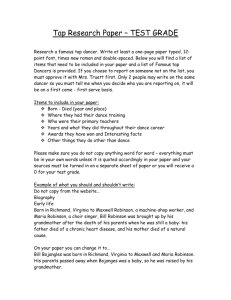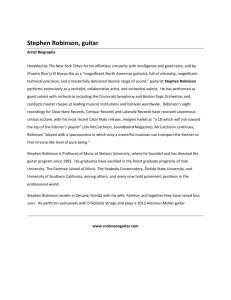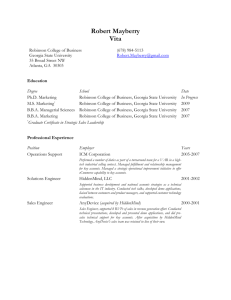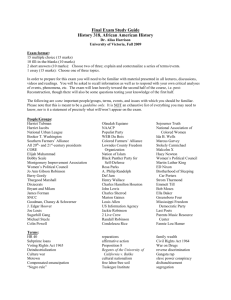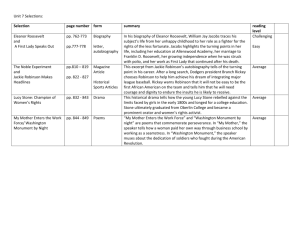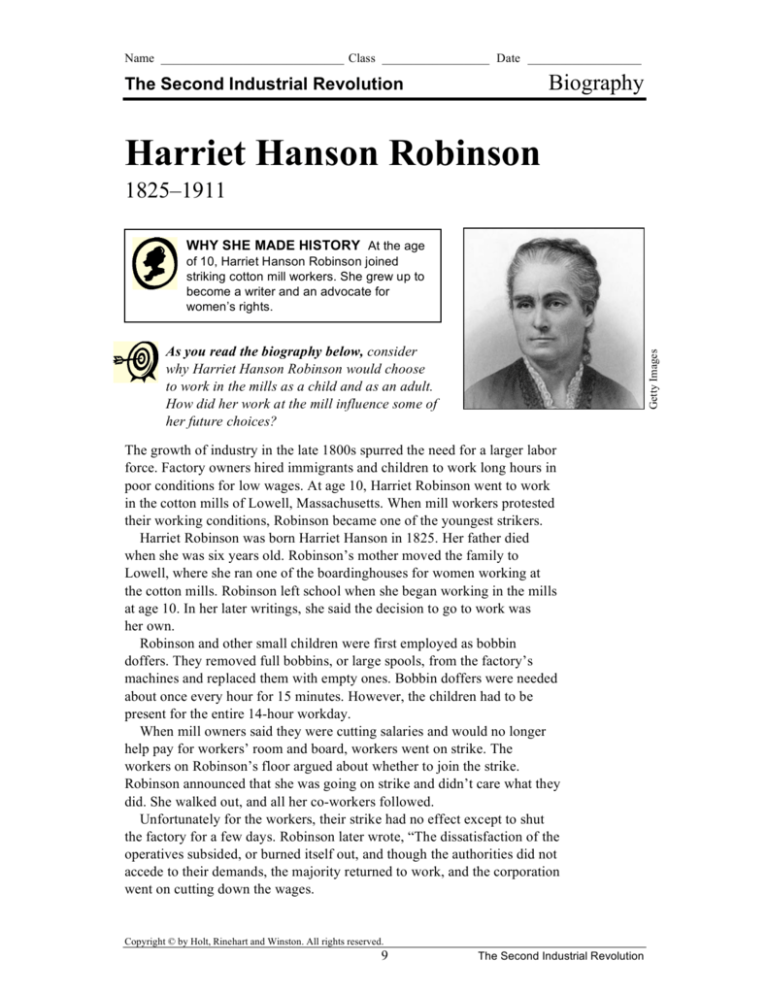
Name _____________________________ Class _________________ Date __________________
Biography
The Second Industrial Revolution
Harriet Hanson Robinson
1825–1911
WHY SHE MADE HISTORY At the age
of 10, Harriet Hanson Robinson joined
striking cotton mill workers. She grew up to
become a writer and an advocate for
women’s rights.
Getty Images
As you read the biography below, consider
why Harriet Hanson Robinson would choose
to work in the mills as a child and as an adult.
How did her work at the mill influence some of
her future choices?
The growth of industry in the late 1800s spurred the need for a larger labor
force. Factory owners hired immigrants and children to work long hours in
poor conditions for low wages. At age 10, Harriet Robinson went to work
in the cotton mills of Lowell, Massachusetts. When mill workers protested
their working conditions, Robinson became one of the youngest strikers.
Harriet Robinson was born Harriet Hanson in 1825. Her father died
when she was six years old. Robinson’s mother moved the family to
Lowell, where she ran one of the boardinghouses for women working at
the cotton mills. Robinson left school when she began working in the mills
at age 10. In her later writings, she said the decision to go to work was
her own.
Robinson and other small children were first employed as bobbin
doffers. They removed full bobbins, or large spools, from the factory’s
machines and replaced them with empty ones. Bobbin doffers were needed
about once every hour for 15 minutes. However, the children had to be
present for the entire 14-hour workday.
When mill owners said they were cutting salaries and would no longer
help pay for workers’ room and board, workers went on strike. The
workers on Robinson’s floor argued about whether to join the strike.
Robinson announced that she was going on strike and didn’t care what they
did. She walked out, and all her co-workers followed.
Unfortunately for the workers, their strike had no effect except to shut
the factory for a few days. Robinson later wrote, “The dissatisfaction of the
operatives subsided, or burned itself out, and though the authorities did not
accede to their demands, the majority returned to work, and the corporation
went on cutting down the wages.
Copyright © by Holt, Rinehart and Winston. All rights reserved.
9
The Second Industrial Revolution
Name _____________________________ Class _________________ Date __________________
Biography
The Second Industrial Revolution
Robinson stayed in the mills of Lowell well into adulthood, moving to
other types of work on the looms. Robinson also pursued her education.
She went on to take high school classes. She used her salary to pay for
private lessons in drawing, German, and dancing.
Robinson’s work at the mill gave her one important advantage in life—a
paycheck. A working woman did not have to be totally dependent on a
husband. As a widow or single woman, she would not be at the mercy of
family members who were better off.
In 1848 Robinson married William Robinson, a newspaper editor and
political activist. Both she and her husband were active in the growing
movement that had taken root in New England to abolish slavery. The
couple had four children.
After William Robinson’s death in 1876, Harriet Robinson began her
own career as a writer. She published a collection of her husband’s work,
an account of women’s efforts to gain the vote, and two plays on the
subject of suffrage. An essay about life in the mills of Lowell grew into a
book titled Loom and Spindle. In this book Harriet Robinson recounts the
story of the strike. She states that nothing in her long life had made her
more proud and happy, and that the only thing that would make her happier
was voting rights for women.
WHAT DID YOU LEARN?
1. Recall What work did young girls do in the Lowell factories?
____________________________________________________________________
____________________________________________________________________
2. Infer Why did Robinson work so many years at the mill in such poor conditions?
____________________________________________________________________
____________________________________________________________________
ACTIVITY
Harriet Hanson Robinson went on strike at the age of 10 for something she
believed in. Think of a rule or law in your school or community that you
think should be changed. What changes would you propose? Research the
issue; then write a speech to convince your classmates to support the
changes you propose. Deliver your speech to the class.
Copyright © by Holt, Rinehart and Winston. All rights reserved.
10
The Second Industrial Revolution

